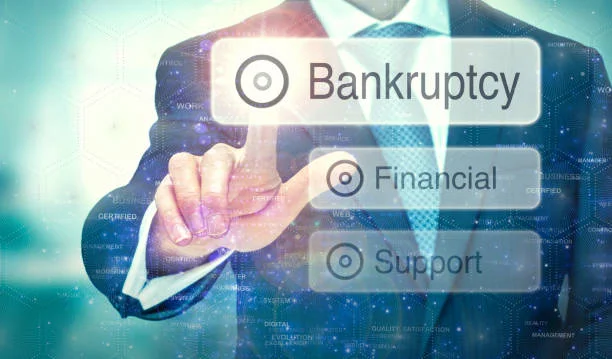Financial struggles are rarely sudden. They build slowly—missed payments, mounting interest, and the quiet pressure of debt becoming unmanageable. For many Canadians, the word “bankruptcy” feels like the inevitable end of that spiral. But here’s the thing: bankruptcy is not the only path forward, and it’s often the last resort. With the right professional guidance, people can find alternatives that protect their financial health and their peace of mind.
One of the most important resources available in Canada is the licensed insolvency trustee, a federally regulated professional who provides clarity and legal options when debt becomes overwhelming. Their role is often misunderstood, yet they are uniquely equipped to help people explore every avenue before bankruptcy becomes necessary.
Understanding Debt Beyond the Numbers
Debt isn’t just about owing money. It’s about stress, the fear of phone calls from creditors, and the feeling of being trapped. Many individuals delay seeking help because they’re embarrassed or hopeful things will turn around. The problem is that waiting often makes matters worse. Interest piles up, and creditors become more aggressive. Recognizing that debt is both a financial and emotional challenge is the first step to changing course.
Dive into expert tips and trends shaping your industry today—click to learn more.
Why Bankruptcy Should Be the Last Resort
Bankruptcy is a legal tool, but it’s also a heavy one. Declaring bankruptcy can clear unsecured debts, but it comes with long-term consequences. Your credit rating takes a serious hit, some assets may need to be surrendered, and you may face restrictions that impact future borrowing. The stigma, while unfair, is also real. Because of this, professionals encourage exploring every alternative before moving toward bankruptcy.
The Hidden Value of Objective Advice
Friends and family might offer well-meaning advice about handling debt, but they lack the legal and financial training to navigate complex situations. Online searches provide information, but not a tailored plan. What’s missing is objective, regulated guidance that looks at your entire financial picture—income, debts, assets, and future goals. This is where professional support makes all the difference.
Consumer Proposals: A Practical Alternative
One of the most effective tools available to Canadians is the consumer proposal. This legally binding process allows individuals to settle debts with creditors for less than the full amount owed, through manageable monthly payments. Creditors benefit from recovering more than they would in a bankruptcy scenario, and debtors benefit from avoiding the harsher consequences of bankruptcy.
Consumer proposals also stop wage garnishments and collection calls, giving people the breathing room to rebuild without constant harassment. For many, it’s a win–win that allows them to keep their home, car, and dignity while regaining financial stability.
Protecting Assets That Matter Most
A common fear is losing everything when facing financial collapse. While bankruptcy can put some assets at risk, alternatives often allow you to keep essential possessions. Tools like consumer proposals, debt repayment plans, and structured negotiations help safeguard homes, vehicles, and retirement savings. The key lies in understanding which assets are protected by law and which could be vulnerable—knowledge that most individuals don’t have until they seek expert help.
The Importance of Regulation and Trust
Not all debt advisors are created equal. In fact, some operate without regulation, charging high fees for services they aren’t legally authorized to provide. In Canada, licensed professionals are overseen by the Office of the Superintendent of Bankruptcy. This ensures accountability, transparency, and ethical practice. Choosing a regulated advisor means knowing your options are legally sound, your money is protected, and your path forward is backed by federal standards.
For reference, you can explore the Office of the Superintendent of Bankruptcy to understand more about these protections and the framework around insolvency in Canada.
Small Business Owners and Debt Relief
Financial challenges aren’t limited to individuals. Entrepreneurs often face debt due to cash flow issues, slow-paying clients, or unforeseen expenses. Shutting down through bankruptcy might seem inevitable, but it’s not always the smartest option. Professional support can restructure business debts, negotiate with creditors, and create repayment terms that allow operations to continue. For small business owners, this can mean the difference between rebuilding and walking away entirely.
Rebuilding After Debt Relief
Avoiding bankruptcy is only half the battle. The real success lies in rebuilding. Establishing good credit habits, creating emergency savings, and managing spending are essential for long-term stability. Professionals often provide resources, coaching, and referrals to help people strengthen their financial literacy. With discipline and the right tools, many individuals who once felt buried in debt find themselves thriving again within a few years.
Taking the First Step
Debt has a way of making people feel powerless, but the truth is that options exist—and many of them are far less drastic than bankruptcy. The hardest part is often the first step: reaching out for help. Once you sit down with a professional, the path forward becomes clearer. You understand your rights, your choices, and most importantly, that financial collapse isn’t inevitable.
Moving Forward with Confidence
Bankruptcy might sound final, but it’s not destiny. With the right guidance, Canadians can explore alternatives that preserve their assets, reduce their stress, and set them on a path to financial recovery. Choosing to act before it’s too late is what makes all the difference. What matters most isn’t the size of the debt, but the willingness to seek help and embrace solutions designed to protect your future.
Explore fresh ideas and strategies that can elevate your brand—start reading here.






